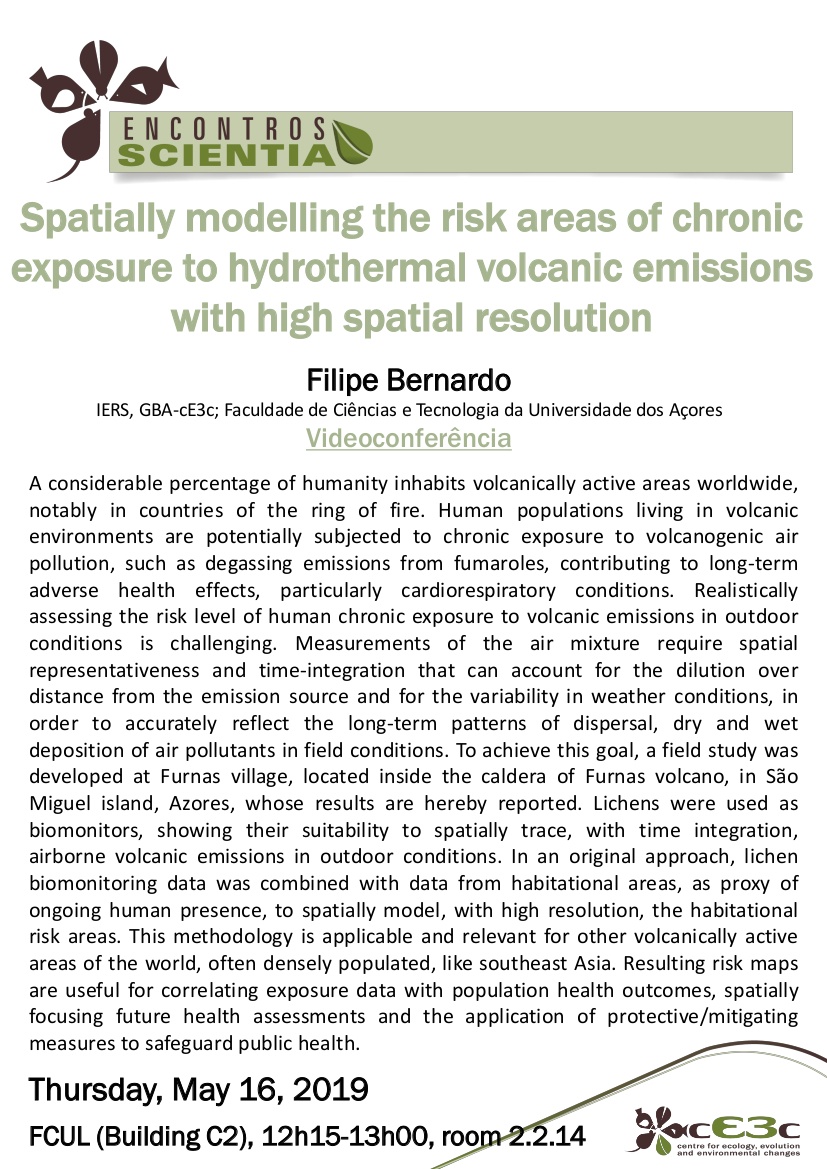VIA VIDEOCONFERENCE
Spatially modelling the risk areas of chronic exposure to hydrothermal volcanic emissions with high spatial resolution
Filipe Bernardo
IERS, GBA-cE3c; Faculdade de Ciências e Tecnologia da Universidade dos Açores
A considerable percentage of humanity inhabits volcanically active areas worldwide, notably in countries of the ring of fire. Human populations living in volcanic environments are potentially subjected to chronic exposure to volcanogenic air pollution, such as degassing emissions from fumaroles, contributing to long-term adverse health effects, particularly cardiorespiratory conditions. Realistically assessing the risk level of human chronic exposure to volcanic emissions in outdoor conditions is challenging. Measurements of the air mixture require spatial representativeness and time-integration that can account for the dilution over distance from the emission source and for the variability in weather conditions, in order to accurately reflect the long-term patterns of dispersal, dry and wet deposition of air pollutants in field conditions. To achieve this goal, a field study was developed at Furnas village, located inside the caldera of Furnas volcano, in São Miguel island, Azores, whose results are hereby reported. Lichens were used as biomonitors, showing their suitability to spatially trace, with time integration, airborne volcanic emissions in outdoor conditions. In an original approach, lichen biomonitoring data was combined with data from habitational areas, as proxy of ongoing human presence, to spatially model, with high resolution, the habitational risk areas. This methodology is applicable and relevant for other volcanically active areas of the world, often densely populated, like southeast Asia. Resulting risk maps are useful for correlating exposure data with population health outcomes, spatially focusing future health assessments and the application of protective/mitigating measures to safeguard public health.
Thursday, May 16, 2019
FCUL (Building C2), 12h15-13h00, room 2.2.14

